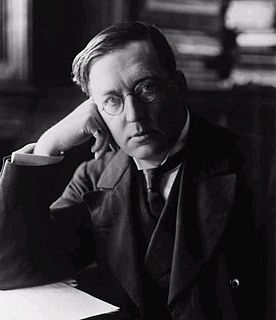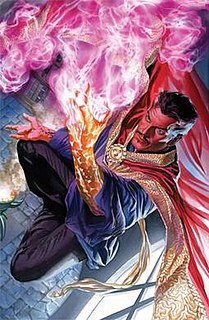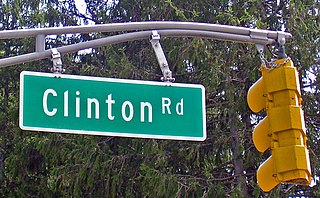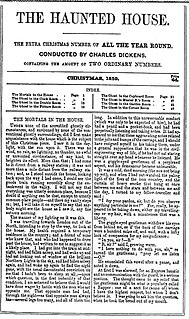
Montague Rhodes James was an English author, medievalist scholar and provost of King's College, Cambridge (1905–1918), and of Eton College (1918–1936). He was Vice-Chancellor of the University of Cambridge (1913–15).
Hilton or Hylton may refer to:

Doctor Stephen Strange is a fictional character appearing in American comic books published by Marvel Comics. Created by Steve Ditko with Stan Lee, the character first appeared in Strange Tales #110. Doctor Strange serves as the Sorcerer Supreme, the primary protector of Earth against magical and mystical threats. Strange was created during the Silver Age of Comic Books to bring a different kind of character and themes of mysticism to Marvel Comics.
In Northern English folklore, the Barghest or Barguest is a mythical monstrous black dog with large teeth and claws, though in other cases the name can refer to a ghost or household elf, especially in Northumberland and Durham, such as the Cauld Lad of Hylton.

Baron Karl Amadeus Mordo is a supervillain appearing in American comic books published by Marvel Comics. The character is depicted commonly as an adversary of Doctor Strange. The character was created by writer Stan Lee and artist Steve Ditko, and first appeared in Strange Tales #111. Baron Mordo is a gifted magician, especially adept in the black arts of magic, including summoning demons.

Clinton Road is located in West Milford, Passaic County, New Jersey. It runs in a generally north-south direction, beginning at Route 23 near Newfoundland and running roughly 10 miles (16 km) to its northern terminus at Upper Greenwood Lake.

Mister Jip is a fictional character appearing in American comic books published by Marvel Comics. He is an evil sorcerer, possessing a grotesque appearance and various mystical powers.

Hylton Castle is a stone castle in the North Hylton area of Sunderland, Tyne and Wear, England. Originally built from wood by the Hilton family shortly after the Norman Conquest in 1066, it was later rebuilt in stone in the late 14th to early 15th century. The castle underwent major changes to its interior and exterior in the 18th century and it remained the principal seat of the Hylton family until the death of the last Baron in 1746. It was then Gothicised but neglected until 1812, when it was revitalised by a new owner. Standing empty again until the 1840s, it was briefly used as a school until it was purchased again in 1862. The site passed to a local coal company in the early 20th century and was taken over by the state in 1950.

Baron Hylton is a title that has been created twice, once in the Peerage of England and once in the Peerage of the United Kingdom. The first creation came in the Peerage of England 1295 when Robert Hylton was summoned to the Model Parliament as Lord Hylton by writ. His son, Alexander, was called to Parliament in 1332 and 1335, but no further summons were sent for his descendants. Therefore, the title has only been held de jure after the death of the second baron. Indeed, the last baron was Member of Parliament for Carlisle after "inheriting" the title, due to this anomaly. Despite this, the creation is deemed to have fallen into abeyance on the death of the eighteenth baron without male heirs in 1746.

"The Story of the Youth Who Went Forth to Learn What Fear Was" or "The Story of a Boy Who Went Forth to Learn Fear" is a German folktale collected by the Brothers Grimm in Grimm's Fairy Tales. The tale was also included by Andrew Lang in The Blue Fairy Book (1889).
The Little Lame Prince and his Travelling Cloak is a story for children written by Dinah Maria Mulock Craik and first published in 1875. In the story, the young Prince Dolor, whose legs are paralysed due to a childhood trauma, is exiled to a tower in a wasteland. As he grows older, a fairy godmother provides a magical travelling cloak so he can see, but not touch, the world. He uses this cloak to go on various adventures, and develops great wisdom and empathy in the process. Finally he becomes a wise and compassionate ruler of his own land.

Who Killed Who? is a 1943 Metro-Goldwyn-Mayer film noir animated short directed by Tex Avery. The cartoon is a parody of whodunit stories and employs many clichés of the genre for humor; for example, the score is performed not by the MGM orchestra but by a solo organ, imitating the style of many radio dramas of the era.
The Blue Mountains is a fairy tale. Andrew Lang included it in The Yellow Fairy Book (1894), but provided no bibliographical information and its origin remains obscure.
Mr. Boogedy is a 1986 family short film directed by Oz Scott and written by Michael Janover. It was developed as a television pilot and aired as an episode of The Disney Sunday Movie. A sequel named Bride of Boogedy aired in 1987.
Babiole is a French literary fairy tale, written by Madame d'Aulnoy. In English publications, the name is sometimes translated as Babiola.

The Hon. Nicholas Haden-Guest, known as Nicholas Guest, is an American actor who has appeared in various movie and television roles, including that of Headmaster Patrick James Elliot in the teen sitcom USA High. Since 2000, he has primarily worked as a voice actor.

A brownie or broonie (Scots), also known as a brùnaidh or gruagach, is a household spirit from Scottish folklore that is said to come out at night while the owners of the house are asleep and perform various chores and farming tasks. The human owners of the house must leave a bowl of milk or cream or some other offering for the brownie, usually by the hearth. Brownies are described as easily offended and will leave their homes forever if they feel they have been insulted or in any way taken advantage of. Brownies are characteristically mischievous and are often said to punish or pull pranks on lazy servants. If angered, they are sometimes said to turn malicious, like boggarts.

"The Haunted House" is a story series published in 1859 for the weekly periodical All the Year Round. It was "Conducted by Charles Dickens", with Charles Dickens writing the opening and closing stories, framing stories by Dickens himself and five other authors.

James Roland MacLaren was a Scottish actor and playwright.

Kaecilius is a fictional supervillain appearing in American comic books published by Marvel Comics. The character is depicted as an enemy of Doctor Strange. The character who first appeared in Strange Tales Vol. 1, #130 was created by Stan Lee and Steve Ditko.













